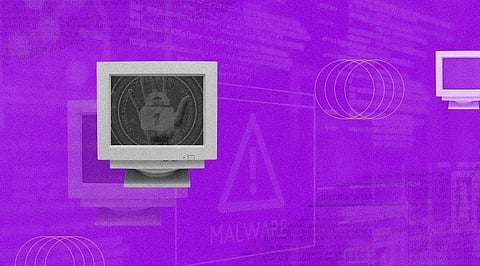

The C-suite now frequently discusses cybersecurity in boardroom discussions. IT and business leaders have historically had difficulty cooperating on cyber risk management, but this disagreement seems to be worse than ever right now. According to a study, over 90% of IT decision-makers think their organisation would be willing to forego cybersecurity in favour of other objectives.
Such a strategy for short-term gains are not worth the risk regarding cybersecurity, which includes monetary losses and reputational harm. An organisation must resolve this business-IT conflict and come to a consensus on cyber risk as a crucial component of business risk in order to succeed in the post-pandemic era of hybrid or remote workforces. Organisations will be able to maximise their commercial opportunities and prevent pricey breaches by using this to better identify, communicate, and mitigate cyber risk across the workplace.
Additionally, research shows that 38% of business decision-makers and 50% of IT leaders believe the C-Suite fully comprehends cyber dangers. Some people think this is due to the field's excessive complexity and rapid change. Others, however, contend that their boards either don't make an effort sufficiently or don't want to, given the significance of cybersecurity.
There are so many reports of IT security breaches in the news feeds that awareness is no longer a problem. More recently than ever before, the C-Suite has begun to grasp the issue and the significance of cybersecurity.
If for no other reason than to try to avoid appearing on the evening news and having an adverse effect on stock prices, good leaders invest time in comprehending the risk in their firm and actively participate in establishing cybersecurity procedures. Boards' attention has grown as well because they understand that they must oversee cyber risk management and regulations just as much as they do any other risk to the company.
The C-Suite has introduced the words "exposure time" and "protection time" in relation to cybersecurity. Protection time can be defined as the combined ability of your security policies, controls, people and processes to identify and protect the confidentiality, integrity and availability of your sensitive information and IT services for a particular amount of time against specific threats. In more straightforward words, protection time can be compared to a fire-resistant safe you purchase for your home that can shield valuables from temperatures of up to 400 degrees Celsius for 30 minutes. You are aware of the threat, the amount of money it can safeguard for 30 minutes, and its duration (a 400-degree fire).
Exposure time acknowledges the existence of hackers who are constantly honing their skills in our society. It is made up of the time it takes to identify, respond to, and recover from a cyber assault that tries to get beyond the above-mentioned defences. In our example, it would be comparable to a home alarm system that can detect a fire and calls a call centre, which tries to verify with the homeowner whether the alert is genuine before dispatching the fire service to put out the fire. In order to prevent the loss of confidentiality, integrity, or availability, the exposure time should be shorter than the protection time.
Proof that the the top C-Suite emphasises the value of cybersecurity:
Google Cloud obtains certifications, attestations, and audit reports to prove compliance as part of routine independent verification of its security, privacy, and compliance procedures. Specific procedures connected to client data privacy are part of our information security and assist keep customer data safe.
All Office 365 applications are safeguarded against cutting-edge attacks by Microsoft Defender, which includes the A5 licence. Additionally, it has the capabilities needed to deal with malware, phishing, ransomware, and compromised credentials as well as other cybersecurity issues.
With XDR features, it assists in preventing and identifying threats across your identities, endpoints, apps, email, data, and cloud apps. Investigate attacks and take action with best-in-class, out-of-the-box protection. From a single dashboard, search for hazards and simply coordinate your reaction.
The Adobe Secure Product Lifecycle ("SPLC") is a stringent set of several hundred distinct security policies, procedures, and tools for software development. Adobe incorporates safeguards, such as two-factor authentication (2FA) for the central Commerce application, to stop brute force assaults. Both brute force attacks and unauthorised access are stopped by 2FA.
Join our WhatsApp Channel to get the latest news, exclusives and videos on WhatsApp
_____________
Disclaimer: Analytics Insight does not provide financial advice or guidance. Also note that the cryptocurrencies mentioned/listed on the website could potentially be scams, i.e. designed to induce you to invest financial resources that may be lost forever and not be recoverable once investments are made. You are responsible for conducting your own research (DYOR) before making any investments. Read more here.
